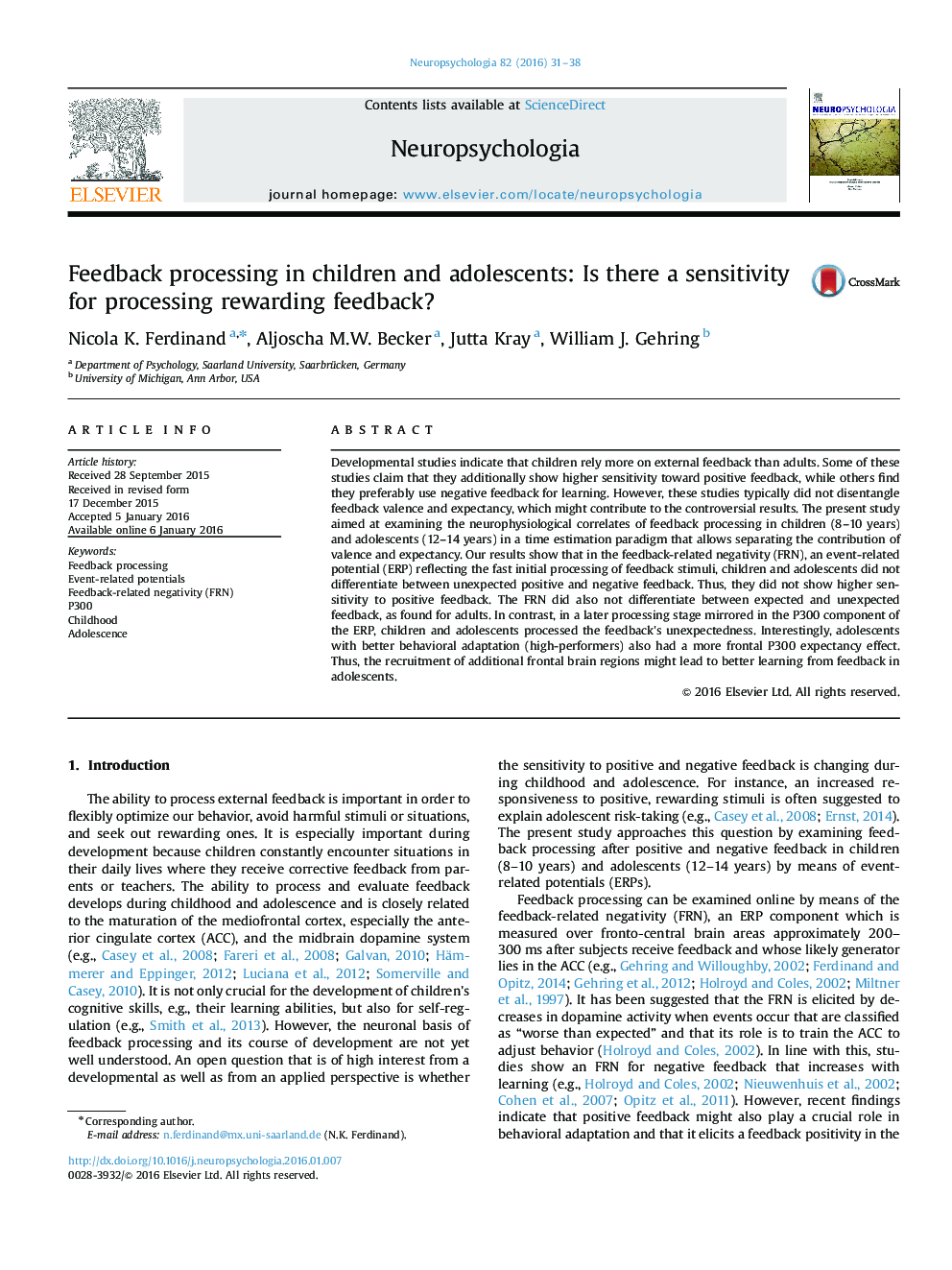| Article ID | Journal | Published Year | Pages | File Type |
|---|---|---|---|---|
| 7319315 | Neuropsychologia | 2016 | 8 Pages |
Abstract
Developmental studies indicate that children rely more on external feedback than adults. Some of these studies claim that they additionally show higher sensitivity toward positive feedback, while others find they preferably use negative feedback for learning. However, these studies typically did not disentangle feedback valence and expectancy, which might contribute to the controversial results. The present study aimed at examining the neurophysiological correlates of feedback processing in children (8-10 years) and adolescents (12-14 years) in a time estimation paradigm that allows separating the contribution of valence and expectancy. Our results show that in the feedback-related negativity (FRN), an event-related potential (ERP) reflecting the fast initial processing of feedback stimuli, children and adolescents did not differentiate between unexpected positive and negative feedback. Thus, they did not show higher sensitivity to positive feedback. The FRN did also not differentiate between expected and unexpected feedback, as found for adults. In contrast, in a later processing stage mirrored in the P300 component of the ERP, children and adolescents processed the feedback's unexpectedness. Interestingly, adolescents with better behavioral adaptation (high-performers) also had a more frontal P300 expectancy effect. Thus, the recruitment of additional frontal brain regions might lead to better learning from feedback in adolescents.
Keywords
Related Topics
Life Sciences
Neuroscience
Behavioral Neuroscience
Authors
Nicola K. Ferdinand, Aljoscha M.W. Becker, Jutta Kray, William J. Gehring,
